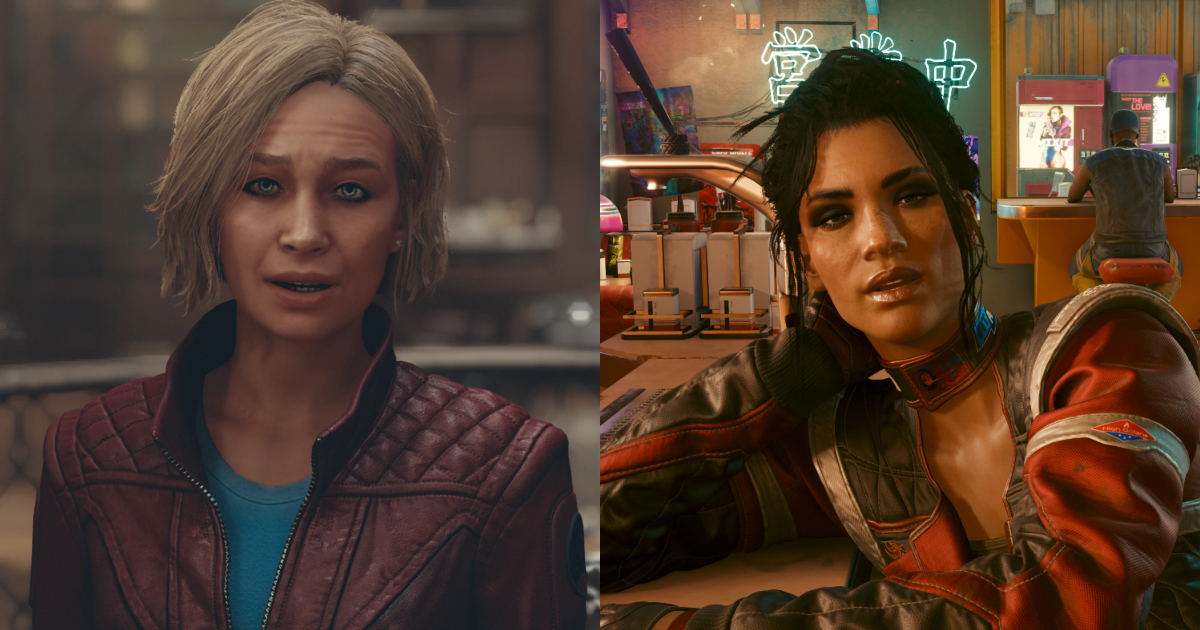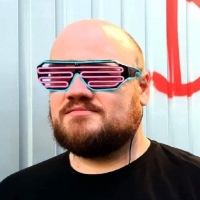Some players have recently started criticizing dialogue animations in Starfield, comparing them to the way character interactions are staged in Cyberpunk 2077. CD Projekt RED designer Patrick Mills has tried to explain the difference in design approach between the two games and why such criticism is generally ignorant.

Starfield (left), Cyberpunk 2077 (right)
The whole story started with a post by blogger Synth Potato, who compared dialogue animations in Starfield and Cyberpunk 2077. The main point was that returning to a rigid camera angle was wrong on Bethesda’s part.
“Why regress to Oblivion?” the post reads. “They had a far better angle in Skyrim and Fallout 4, sure neither had good facial animations but at least it didn’t lock you in & remove body language entirely like Starfield does.”
Synth Potato also posted videos from both games illustrating the issue. In the first one, we see the main character lighting Judy’s cigarette, and then she shakes her leg while sitting. The scene from Starfield, on the other hand, looks static, having no body animations or additional gestures.
“I’ve been really feeling more and more critical of Starfield after going back to Cyberpunk, with the constant load screens, awful dialogue camera and lackluster animations,” Synth Potato wrote, adding that “I really don’t think even with patches that Starfield can ever really match this level of quality, this is fundamentally the fault of Creation Engine.”
As much as I like Starfield, Creation Engine needs to go.
Going back to Cyberpunk puts in perspective just how outdated Starfield’s dialogue animations are & it is staggering, regressing to a rigid camera angle that was left behind in 2006 with Oblivion and entirely eliminating… pic.twitter.com/p7Y4TNgNYM
— Synth Potato (Ameer) 🥔 (@SynthPotato) October 1, 2023
CD Projekt RED lore designer Patrick Mills then decided to respond, saying that the difference between the two games cannot be reduced just to Bethesda’s proprietary engine. He noted that he personally loves Starfield a lot, and the “way they handle cinematics vs 2077 is not down to engine so much as it is tools and design.”
I like starfield a lot, so I’m not getting involved in the core criticism here, but I will say that the way they handle cinematics vs 2077 is not down to engine so much as it is tools and design. Related but not the same. https://t.co/l1rJNFlBoe
— Patrick K. Mills (@PKernaghan) October 2, 2023
Although Mills is “not an engine guy,” he believes that Bethesda could have done more with staging dialogue scenes if it wanted to. So the main reason the studio didn’t focus on this aspect is that Starfield, unlike Cyberpunk 2077, prioritizes the “necessarily high level of player freedom.”
You can't do the Judy's roof thing because you can have that scene play out on a hundred something different planets, at any time. They do some scenes that are staged in a more refined way, like meeting Constellation for the first time, some quest sequences, etc. But they have vastly more scenes with a revolving cast of characters and a mind boggling number of possible locations.
Franchise & lore designer at CD Projekt RED
Mills added that “every major scene in 2077 took literal years to make,” while Starfield allows players to interact with story characters on any planet. So if Bethestda wanted to apply CD Projekt’s approach to dialogue design, such a game would have taken forever to make.
He said it is okay if players want scenes in Starfield to be more cinematic, but “it comes at a cost.” According to Mills, this is like asking Larian Studios to make a DLC for Baldur’s Gate 3 that will introduce real-time combat, ignoring that particular game’s core design and philosophy.
“It’s ignorant,” Mills concluded, adding that “you can’t make a game that has every feature executed to the same level as the best in that field, and it has very little to do with the engine you are using.”
Replying to some users in the comments, he also said there are always design constraints that should be kept in mind.
Like, barret wants to talk to me about his dead husband, that scene can play out in my (modifiable) ship, or on Mars, or in a zero g space casino, etc
I can try to force that scene to take place in a specific spot, but that changes how the player is used to playing those games
— Patrick K. Mills (@PKernaghan) October 2, 2023
Mills joined CD Projekt RED in 2013 as a senior quest designer, having worked on The Witcher 3, its expansions, and Cyberpunk 2077. “I made Geralt’s horse talk, it was pretty cool,” he wrote on LinkedIn.
Eight years later, Mills was promoted to franchise and lore designer of the Cyberpunk IP. Since January 2023, he has been serving as the franchise content strategy lead.
Prior to joining CDPR, Mills worked at Obsidian Entertainment. His credits include games like Neverwinter Nights 2 and the Mask of the Betrayer expansion, where he was responsible for additional scripting. As a designer, he also helped the studio ship Alpha Protocol.

